Bills and explanatory memoranda
What is a bill?
A bill is a proposal for a law or a change to an existing law.
A Commonwealth bill can be introduced into either house of Parliament, unless it is a money bill which must be introduced in the lower house.
Broadly speaking, bills are introduced in a similar manner in most Australian jurisdictions but this varies slightly from state to state, and in the territories.
Generally, before a bill is passed it is read three times. The first reading is when it is tabled, the second reading when its purpose is outlined and debated, and the third reading when a vote is taken. If passed the bill is then referred to the other house of Parliament.
A bill becomes law (an Act) when agreed to in identical form by both the relevant upper and lower house and assented to by the Governor (for state bills) or Governor-General (for Commonwealth bills).
For Queensland, Australian Capital Territory and Northern Territory a bill only has to pass one house. This is because the parliaments of Queensland, Australian Capital Territory and Northern Territory are unicameral, meaning they only have one house – called the Legislative Assembly.
For more information see Bills and Laws fact sheet (Parliamentary Education Office).
What are explanatory memoranda?
Explanatory memoranda are publications that explain the content of a bill or regulation. They use simple, non-legal terms and may be used to interpret legislation.
Not every bill has an explanatory memorandum (EM). In the Commonwealth Parliament, for example, they did not become standard practice for all bills until 1982.
The second reading speech of the Minister responsible for a bill also outlines the purpose of a bill in plain language.
Explanatory memoranda may be published as loose pamphlet copies or attached to the front of the bill. In most libraries, the explanatory memoranda are kept with the bills.
Explanatory statements have also been prepared for some Commonwealth regulations since about 1932 and have been tabled in Parliament since the mid-1980s. However, they are not publicly available before 1982. Since 1 January 2005, explanatory statements have accompanied all Commonwealth legislative instruments.
Online resources
Federal Register of Legislation
The Federal Register of Legislation no longer publishes copies of all the Bills and Explanatory Memoranda (EM) for each year. For Acts between 1997 to 2023, you will find a link to a page with a copy of the Bill as first introduced and the initial EM on the Register. For Acts published from 2024 onwards, the Register will have a link to the Australian Parliament House website Bills page, at the bottom of the ‘all versions’ page for each Act. Copies of Bills before they become an Act and Bills that are not passed by Parliament are not available on the Federal Register of Legislation.
Parliament of Australia – Bills and Legislation
Bills and explanatory memoranda, mainly from 1997 onward, can be found on the Parliament of Australia website. You can also search for Assented bills of previous Parliaments which can be sorted by title, date, chamber, status, and sponsor/portfolio. Indexes to Hansards and Votes and Proceedings can also help you track the progress of a Commonwealth bill through Parliament.
ParlInfo guided search – Parliament of Australia
You can search ParliInfo using a guided search for bills, bills digests, and explanatory memoranda. You can also find historic Bills and Explanatory Memoranda from 1983 onward.
Explanatory memoranda index 1901 – 1982
This lists all items identified as explanatory memoranda in the Commonwealth Parliament from 1901 to 1982, after which the provision of explanatory memoranda has been standard practice for Commonwealth bills. The site also includes selected EMs from 1983 onwards.
Go to Commonwealth Legislation to find:
- Commonwealth bills 1967-
- Commonwealth bills explanatory memoranda 1959-
- Commonwealth numbered regulations explanatory statements 1991-
You can also find bills and explanatory memoranda from other states and territories, by choosing the relevant jurisdiction, and then 'legislation' from AustLii’s homepage. Please note that the bills available may not be a complete set.
State and territories government legislation websites
Bills and explanatory memoranda from states and territories are also available online from the relevant legislation government website for each state and territory. See the Other states and territories page of this guide for a list of these.
Print resources
The printed collections at the National Library contain substantial collections of older bills in print, though these may not be complete sets. In most cases, the Explanatory Memoranda is kept with the Bills; some exceptions are listed below. Use the online catalogue to find and retrieve material using your Library login.
Examples of subject searches you can try are:
- Bills, Legislative – Australia – Periodicals
- Bills, Legislative – New South Wales - Periodicals
- Bills, Legislative – [jurisdiction] - Periodicals
Key resources include:
Commonwealth
- Bills / The Parliament of the Commonwealth of Australia, House of Representatives
- Bills / The Parliament of the Commonwealth of Australia, the Senate
- Explanatory statements to statutory rules [microform]
Australian Capital Territory
The first ACT Legislative Assembly existed from 1974 to 1979 when it was renamed the House of Assembly which continued until June 1986. From 1975 to 1981, bills for new or amended ordinances were attached to 'Messages from the Minister' [for the Capital Territory] and were included in the Hansard for the ACT:
- Hansard / Australian Capital Territory Legislative Assembly (1975 – 1979)
- Hansard / Australian Capital Territory, House of Assembly (1979 – 1986 imperfect)
Hansard
If you cannot locate an explanatory memorandum for a specific Commonwealth bill, check the Parliamentary debates (Hansard) for either the House of Representatives or the Senate. These are available online as HTML versions from 1901 and as PDF since 2000. Hansard will include a record of the second reading of the bill, where the responsible member will outline the bill's purpose. Although not the same as an EM, the information contained in second readings can often be very useful.
To find state or territory second readings check the relevant state or territory parliamentary debates. Use the GovPubs database to help identify and locate these.
Other states and territories
The GovPubs database can help you locate printed bills and explanatory memoranda held in the Library:
- Visit GovPubs.
- Go to the menu on the homepage and select Browse by publication
- Choose either 'Bills' or 'Explanatory memoranda' and then the relevant jurisdiction.
- Click on a relevant title and then click on NLA under ‘Locate a copy of this publication’.
- Cut and paste the ‘Amicus number’ into the Library’s catalogue to find the relevant record and to request the item for use in the reading room.
You can also try contacting the relevant state library with your enquiry.
Disclaimer
Staff at the National Library of Australia are not able to provide legal advice.
Every effort is made to provide accurate and relevant information, but this does not constitute qualified legal advice.
In this guide
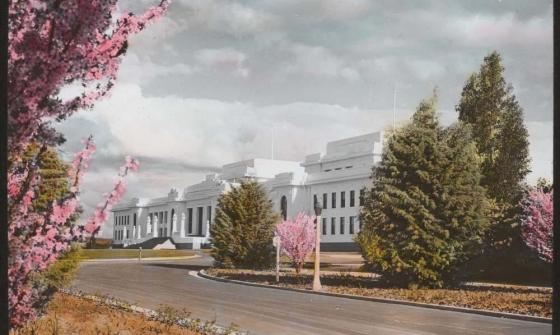
William James Mildenhall, Parliament House, Canberra, nla.gov.au/nla.obj-141452790
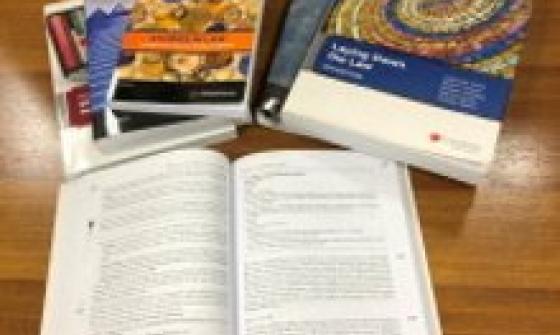
Books on legal research. Image: National Library of Australia
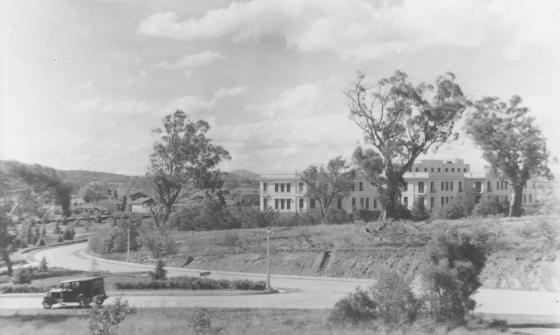
R. C. Strangman, Canberra buildings, West Block, 1930s, nla.gov.au/nla.obj-140358666
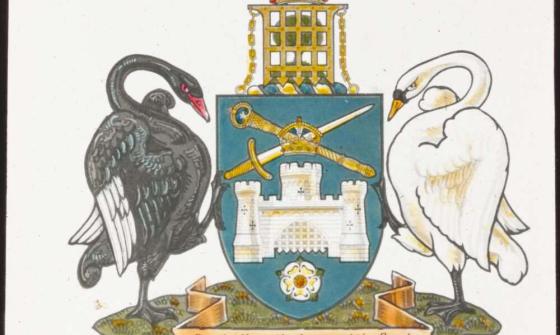
William James Mildenhall, Canberra Coat of Arms, nla.gov.au/nla.obj-141452193
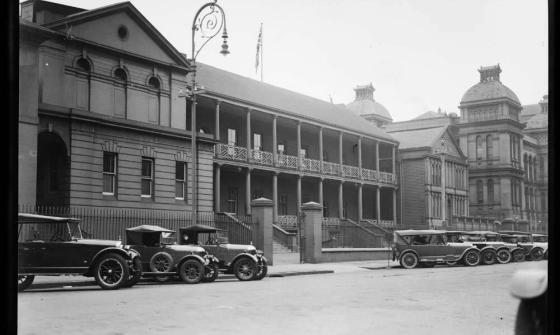
Fairfax Corporation, New South Wales State Parliament House with automobiles parked outside, Sydney, ca. 1930, nla.gov.au/nla.obj-162790401
